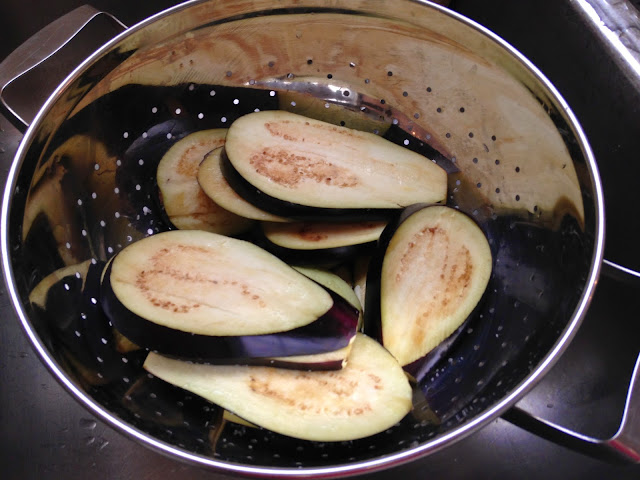We grow three different types of grapes - Norton wine grapes and red and white Concord grapes. Our Nortons have ripened in a very odd way this season. They have produced more grapes than in past years but some berry clusters have ripened early and others are still very green. So, sadly, since we have only four vines and not enough are ripening at the same time to harvest enough of them to make a decent amount of wine, we are going to try something a little different this year and make grape marmalade and grape liqueur with them.
For information on Norton wine grapes and their interesting back story -
Here is how we made the marmalade. It has a delicious earthy sweet berry tartness and rich deep dark red maroon color - just like a good Norton wine! We used Norton grapes because we grow them but you can use Concord grapes which are more available and are a slip skin grape.
Procedure - for 3 cups of skinned grapes
Step 1 - Grow some grapes
Step 2 - Harvest the grapes - we cut what was ripe enough to use, without knowing what the end amount would be. It came to a little over 3 cups of skinned grapes.
Step 3 - Wash the grapes while still attached in clusters.
Step 4 - Pull the grapes off their stems and discard any unripe or problem grapes. Place the rest in a colander.
Step 5 - Nortons are a slip skin type grape, as are concords, so skins are easily removed by pinching one side of the grape and gently squeezing, the inside with the seeds will pop out the opposite side. Place the skinned grapes in a skillet or pot. Put the skins in a bowl.
 |
| Skins on the left, nude grapes on the right |
Step 6 - Put the grape skins in a food processor with a little water and process until they form a smooth slush.
Step 7 - Meanwhile add 1/2 cup of water to the skinned grapes in the skillet. Bring to a boil for 5 minutes. Remove from the heat and let cool.
Step 8 - Pour the cooled grapes into a mesh sieve over a bowl and press down mashing with a spoon so the juice separates from the seeds. Discard the seeds.
 |
| Grape seeds to be discarded |
Step 9 - Ladle into sanitized canning jars and add lids and rings
Step 10 - Place them in a large pot with enough water to cover by an inch and boil for 10 minutes. Remove and let cool.
Step 11 - Enjoy
____________________________________________
Making Norton Grape Liqueur
General instructions -
3 lb. fresh ripe grapes
9 cups 80-proof vodka (or 4.5 cups pure grain alcohol + 4.5 cups water)
Granulated sugar
9 cups 80-proof vodka (or 4.5 cups pure grain alcohol + 4.5 cups water)
Granulated sugar
Rinse the grapes.
Pull each grape off its stem
cluster, pinching each grape as you do so, just enough to split the skin. This will allow the color and taste to infuse better into the alcohol.
Put them into a container that can be weighed easily. An inexpensive food scale works well here.
Put them into a container that can be weighed easily. An inexpensive food scale works well here.
Dump the grapes into a sanitized glass container,
we used a screw top gallon jug.
Add the vodka.
Cap and store in a cool,
dark place, stir once a week for 2 - 4 weeks.
Strain through mesh sieve into a new container and note the amount.
In this ratio - for each 3
cups of unsweetened liqueur add 1 1/4 cup granulated sugar.
Let age for at least three
months.
Carefully pour the clear
liqueur through cheese cloth into individual smaller bottles and cap. Taste and
add more sugar if necessary.
Note: Save and freeze the grapes spent to
make the liqueur. They can be used in desserts. Mix with sugar and use with ice-cream or on top of pound cake, etc.
Our process -
Our process -
We harvested all the Norton grapes that looked ripe enough to use. Our grapes cleaned, came to 3 1/2 pounds.
Pinch each berry open as you pull them off their stems. Then weigh them. We have a simple food scale we use. Each cupful came to 8 oz. It is important to get the exact weight so you can determine the correct amount of alcohol and sugar to add later.
Put the grapes in a sanitized glass jug.
We used 100 proof vodka, added 7 cups plus a little water.
Day 2 - After just one day, the color has changed to a nice red maroon. The grapes are turning pale as the color bleeds out into the alcohol. The color should get richer over time.



























